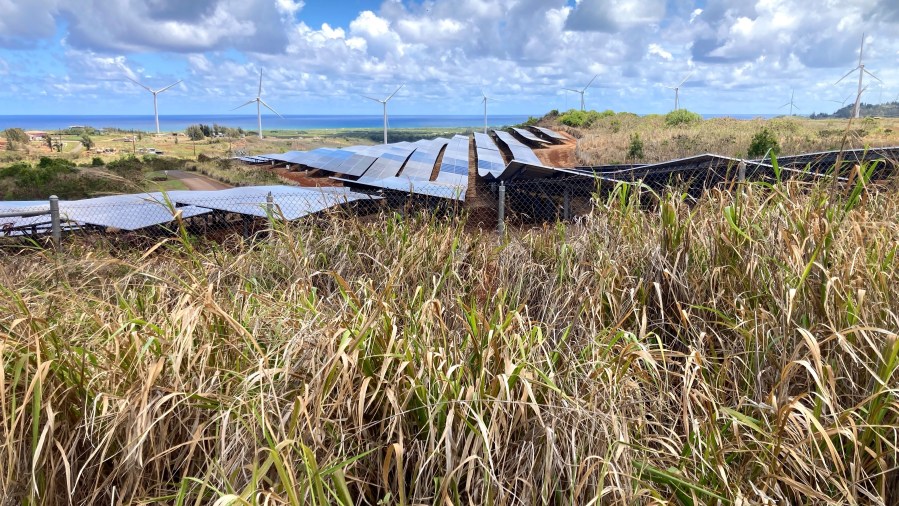HONOLULU (KHON2) — The Hawaiian Council (formerly Council on Native Hawaiian Affairs) has appointed Josh Stanbro as chief administrator of Kalāhiki for a new statewide effort focused on energy sovereignty, climate resilience and economic security.
Kalāhiki is designed to give Hawaiʻi families practical help at a time when federal energy and climate programs are shrinking and households are losing millions in benefits.
The initiative will offer support on energy costs, home resilience and long-term security for communities across the islands.
“Josh brings the passion, experience, and strategy we need to ensure Kalāhiki leads the charge toward a self-sufficient future for our lāhui, and all of Hawai‘i,” said Kūhiō Lewis, CEO of Hawaiian Council. “Through this work, we will help deliver real solutions in people’s homes – lower energy costs, stronger houses, and more resilient communities.”
Stanbro said his new role is about helping local families keep their homes secure and their energy affordable.
“We are really laser focused on developing economic opportunities for the Hawaiian community here in the islands. And energy is a huge space for that,” he said.
Energy at home
Stanbro said the goal is clear, and it starts with Hawai‘i generating its own power instead of relying on outside sources.
“We know that in order to be energy sovereign and energy secure in the islands; we need to produce our energy here, consume our energy here,” Stanbro explained. “And that in order to do that, we’re going to have to have, you know, solar panels on every single rooftop.”
He said that many rooftops belong to families who cannot afford the technology.
“Right now, we recognize that the communities that need that utility bill assistance and that cut in their costs the most haven’t been able to access that,” Stanbro said.
Kalāhiki will focus on those households that have been left out of clean energy programs and are most in need of relief.
“It’s really an effort by Hawaiian Council to make sure that we can gain energy sovereignty in our homes, gain climate resilience in our homes, and try to really build wealth and protect economic equity over time,” he explained.
Protecting homes
Stanbro connected the program to Hawai‘i’s most basic need and said that stability begins with protecting where people live.
“For a lot of people, their home is really what they have. And if you lose that, your chances to be able to stay here in Hawai‘i is very difficult,” he said.
He also pointed to the fires in Lahaina as a painful reminder of what climate change can bring to local families.
“We saw the tragedy in Lāhainā, which we’re going to have more of these types of climate impacts that not only threaten our communities, but threaten people’s economic well-being,” Stanbro said.
Filling the gap
The work has grown more urgent after federal support dried up that has left local families without the help they had been promised.
“The federal government just rescinded and clawed back $62.5 million that was supposed to be destined for low income Hawai‘i families to help them get solar on their roofs and reduce their energy bills,” Stanbro said. “In this moment where the federal government is really jumping ship and pulling back, Hawaiian Council has decided to step in and step forward.”
To move forward, Stanbro said success will depend on building strong local partnerships with businesses rooted in the community.
“We’ve done plenty of things on our own here in the islands with local partners, homegrown solar installers, energy efficiency providers that are here, local businesses, some of whom are Native Hawaiian run and are just waiting for the opportunity to expand and grow,” he said.
Trusted resource
Stanbro said the Hawaiian Council wants families to be protected from scams that can trap them in costly contracts.
“There are companies that are preying on folks that don’t have that fullness of knowledge or frankly, don’t have the time to look into it,” he said. “That’s why Hawaiian Council is stepping forward in this moment.”
He added that Kalāhiki will serve as a trusted guide for residents who need help sorting through their options.
“We want to be sort of a neutral, trusted resource, to point folks in the right direction or if you’re worried and interested or you’ve got a proposal,” Stanbro said.
Looking ahead
Kalāhiki has already started small pilot projects to make sure the program runs smoothly before expanding.
“We’re testing out partners, we’re testing out the systems and make sure that, you know, it’s seamless, that it works,” Stanbro said.
Stanbro said the program will grow step by step, with families joining as trusted local partners help lead the way.
“We’re trying to do it as the community,” he said. “We’re trying to do it as a local community with local partners that folks know and bump into each other when they’re out to the land or wherever and they see each other for the long haul here.”
You can click here to learn more about the Hawaiian Council and here to find out about Kalāhiki.
Stanbro has his work cut out for him with lots of different interests in advancing and slowing down progress toward Hawaiʻi’s energy independence.
